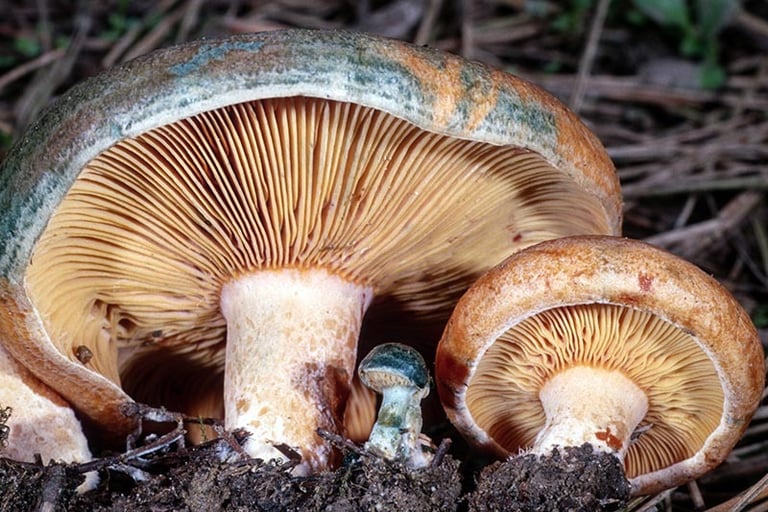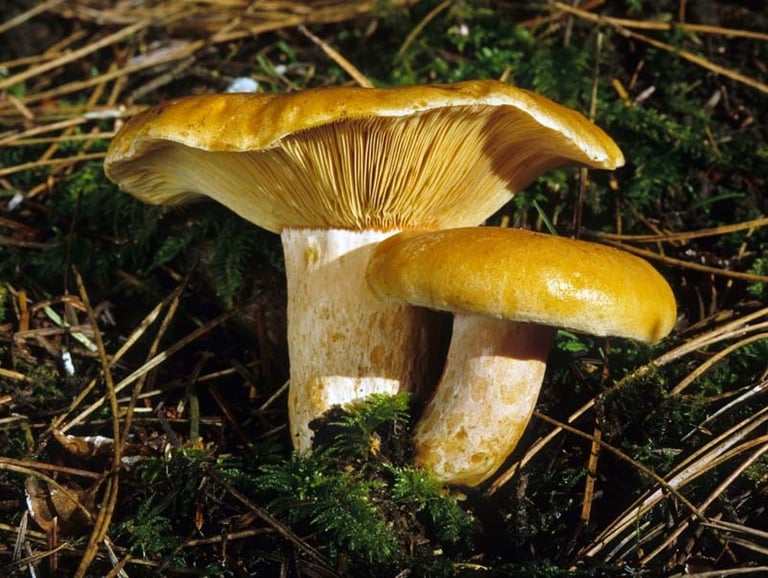Lactarius Deliciosus


Image By Fred Stevens
Hygrophoropsis aurantiaca, also known as the false chanterelle, is a mushroom species that is found in North America and Europe.
Description
1. Cap: The cap of Lactarius deliciosus is usually bright orange or orange-red in color, and can be between 5-20 cm in diameter. It is usually slightly convex or flat, and has a slightly velvety or dry texture. The cap can also have small, depressed areas or concentric circles.
2. Gills: The gills of Lactarius deliciosus are usually yellowish in color and are decurrent, which means they extend down the stem. When cut or bruised, the gills may release a milky, white latex.
3. Stem: The stem of Lactarius deliciosus is usually the same color as the cap or slightly lighter, and can be between 2-8 cm tall and 1-3 cm wide. It is usually solid, firm, and sometimes has a slightly woolly texture.
4. Spore print: The spore print of Lactarius deliciosus is usually pale yellow.
5. Habitat: Lactarius deliciosus is usually found in coniferous forests, but can also be found in mixed deciduous-coniferous forests. It grows in a mycorrhizal association with trees, especially with pine, fir, and spruce.
6. Lookalikes: Some potential lookalikes of Lactarius deliciosus include the inedible or poisonous Lactarius rufus, which has a rusty red cap and stem and also releases a milky white latex when cut. Another potential lookalike is the orange-brown Russula species, which lack the milky latex and usually have brittle caps that are easily broken. It is important to be very careful when identifying mushrooms, and to use multiple identifying factors to confirm the identity of a species.









